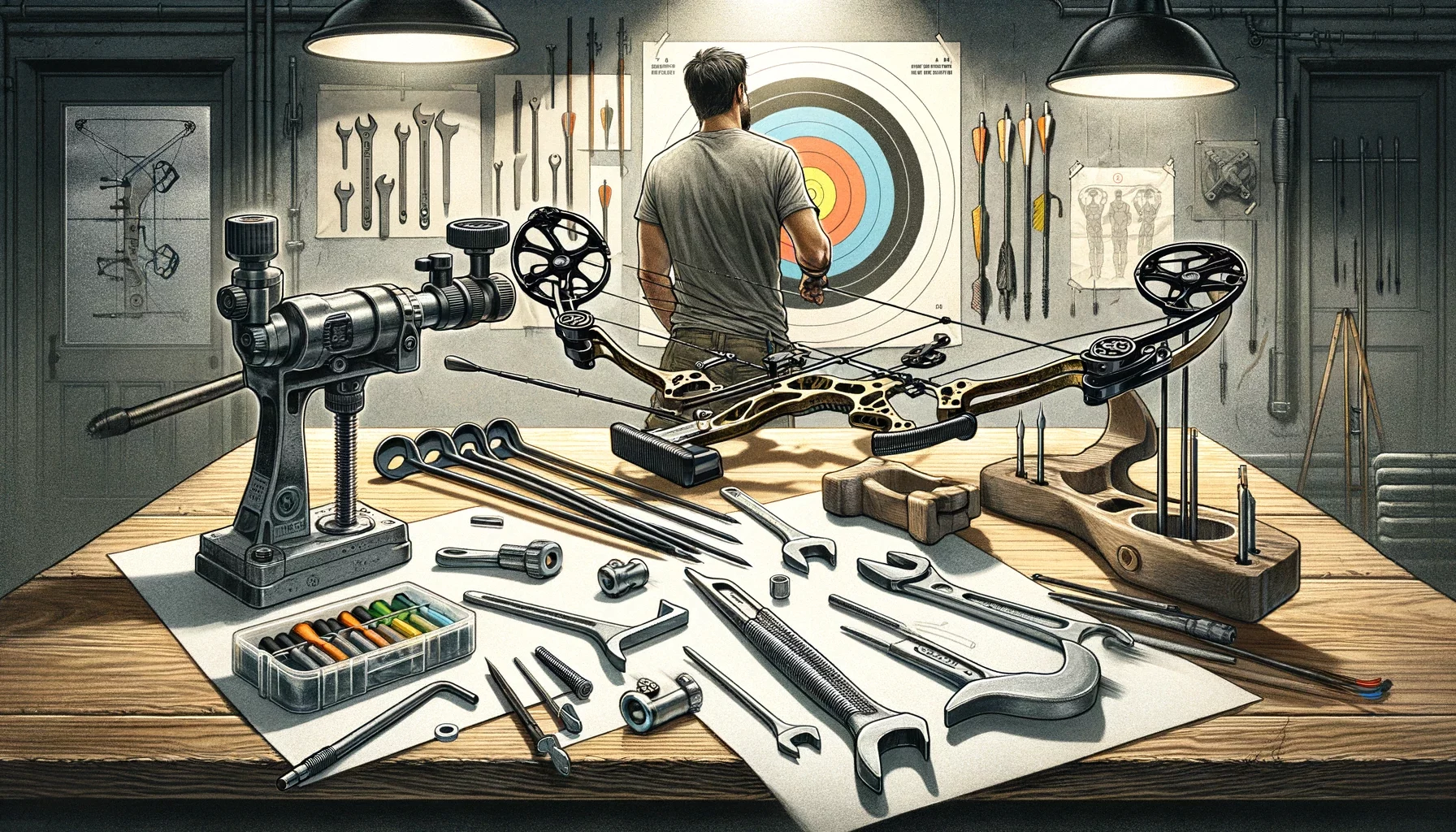
Welcome to our in-depth guide on bow tuning for beginners. As a novice archer, the idea of tuning your bow might seem daunting, but it’s a crucial step towards ensuring accuracy and consistency in your shots. This article will walk you through the process of bow tuning in a step-by-step manner, making it easy and accessible even if you’re just starting out in the world of archery.
Table of Contents
What is Bow Tuning?
Bow tuning is the process of adjusting the various components of a bow to optimize its performance. Proper tuning ensures that your arrows fly straight and true, maximizing accuracy and efficiency.
Why is Bow Tuning Important?
Before you begin, ensure you have the following tools:
Safety Tip: Always handle your tools with care and follow the manufacturer’s guidelines.
Paper tuning is a simple yet effective method to fine-tune your bow.
After making all the adjustments, it’s time to test your bow in a real-world scenario.
Remember, bow tuning is an ongoing process. As you become more familiar with your equipment and your shooting style evolves, you’ll need to make additional adjustments. Keep practicing, and don’t hesitate to tweak your setup as needed to maintain optimal performance.
For further reading and detailed tutorials, check out our recommended list of resources on bow tuning and archery techniques.
A: Yes, you need specific tools for bow tuning. These include a bow press (especially for compound bows), an Allen wrench set for adjustments, a bow square for aligning the nocking point, and nocking point pliers. Having the right tools makes the tuning process more accurate and efficient.
A: It’s recommended to tune your bow at least once a season or whenever you notice a change in your arrow flight. Regular maintenance, like checking string tension and arrow rest alignment, should be done more frequently, especially if you use your bow often.
A: Beginners can perform basic tuning at home with the right tools and guidance. However, for more complex adjustments or if you’re not confident in your tuning skills, it’s advisable to seek assistance from a professional at an archery shop.
A: Paper tuning involves shooting an arrow through a sheet of paper to analyze the tear it leaves. This method helps identify issues with arrow flight, such as fishtailing or porpoising, indicating the need for adjustments to the bow’s rest, nocking point, or even the arrows themselves. It’s a simple yet effective diagnostic tool.
A: Yes, the tuning process differs slightly between recurve and compound bows. Compound bows often require more technical adjustments and the use of a bow press. Recurve bows, on the other hand, have simpler mechanics but still require precise tuning for optimal performance. The principles of aligning the arrow and ensuring proper flight are consistent across both types.
Gun owners regularly hear that maintaining their firearm is essential, but many still wonder exactly…
When handling any firearm whether it’s a hunting rifle, shotgun, handgun, or even a crossbow—reliability…
Jerking the trigger is one of the most common accuracy problems pistol shooters face. Whether…
Keeping your handgun clean is one of the most important responsibilities you have as a…
Archery has evolved dramatically over thousands of years, yet one debate continues to spark curiosity…
When you’re setting up a long-range rifle scope, one of the most important decisions you’ll…
This website uses cookies.